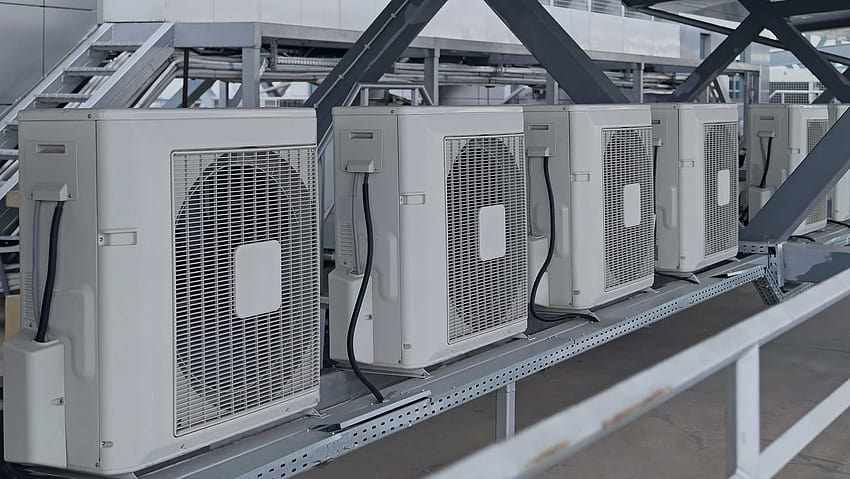Mastering Indoor Comfort: Your Ultimate Guide to Heating and Air Conditioning
Mastering Indoor Comfort: Your Ultimate Guide to Heating and Air Conditioning
Blog Article

Creating a comfortable indoor environment is essential for both our well-being and productivity. Heating and air conditioning play a crucial role in maintaining the perfect temperature and air quality within our homes and workplaces. As seasons change, the importance of a reliable heating and cooling system becomes particularly evident, affecting not just comfort but also energy consumption and utility bills.
In this guide, we will explore the various aspects of heating and air conditioning, helping you understand how to choose the right systems, maintain them effectively, and utilize them efficiently. Whether you are looking to install a new unit or optimize an existing one, understanding the fundamentals will empower you to make informed decisions and enjoy the ideal indoor climate year-round.
Understanding HVAC Systems
Heating, ventilation, and air conditioning, commonly referred to as HVAC, play a crucial role in maintaining indoor comfort. These systems are designed to regulate temperature, humidity, and air quality in residential and commercial spaces. A well-functioning HVAC system ensures that your environment remains comfortable throughout the year, regardless of external weather conditions. Understanding the components and functions of an HVAC system is essential for making informed choices about installation, maintenance, and upgrades.
At the core of an HVAC system are three primary components: heating, ventilation, and air conditioning. The heating element is responsible for warming the indoor space during colder months, commonly using furnaces or heat pumps. Ventilation involves the exchange of indoor air with outdoor air, improving air quality by removing contaminants and maintaining fresh airflow. The air conditioning component cools the air during warmer months, utilizing refrigeration principles to reduce temperatures and manage humidity levels. Each of these components works cohesively to provide a comfortable indoor climate.
Choosing the right HVAC system can significantly impact energy efficiency and overall comfort. Factors such as the size of your space, insulation quality, and local climate should be considered when selecting a system. Regular maintenance, including filter changes and routine inspections, is vital for ensuring that your HVAC system operates efficiently and lasts for many years. Through this understanding of HVAC systems, homeowners and business owners can make choices that enhance their indoor comfort while also being mindful of their energy consumption.
Click Here
Optimizing Energy Efficiency
Achieving energy efficiency in heating and air conditioning systems is crucial for reducing utility bills and minimizing environmental impact. One of the most effective ways to enhance efficiency is through regular maintenance. Scheduling routine check-ups with a qualified technician ensures that your system is clean and functioning properly. This includes checking and replacing filters, inspecting ductwork for leaks, and cleaning coils. A well-maintained system operates more efficiently and prolongs the life of your equipment.
Additionally, proper insulation and sealing in your home can significantly affect your heating and air conditioning efficiency. Insulating walls, attics, and crawl spaces prevents heat loss during winter and keeps cool air inside during summer. Sealing gaps around windows and doors can further enhance your home’s thermal barrier. Implementing these measures can help maintain a consistent indoor temperature, allowing your heating and cooling systems to operate less frequently while still keeping your home comfortable.
Lastly, considering the use of programmable thermostats can greatly improve energy efficiency. By setting specific temperatures for different times of the day, you can avoid unnecessary heating or cooling when no one is home. Smart thermostats can even learn your schedule and adjust settings automatically, providing convenience and savings. Investing in energy-efficient models and understanding how to utilize them effectively can make a significant difference in managing your indoor climate efficiently.
Maintaining Your Equipment
Regular maintenance of your heating and air conditioning systems is essential to ensure optimal performance and longevity. Start by cleaning and replacing air filters every one to three months, depending on usage and the type of filters you have. Dirty filters can restrict airflow, causing your system to work harder and potentially leading to costly repairs. Additionally, ensure that the areas around both indoor and outdoor units are clear of debris and obstructions, allowing for efficient airflow and heat exchange.
In addition to changing filters, it is important to schedule professional inspections and servicing at least once a year. A qualified technician can check for potential issues, clean internal components, and ensure that refrigerant levels are adequate. During these visits, they can also check for any wear and tear, tightening connections, and performing any necessary adjustments to keep your system running smoothly. This proactive approach can prevent major breakdowns and extend the life of your equipment.
Finally, don’t forget to pay attention to your thermostat settings and functionality. Regularly calibrate your thermostat to ensure it accurately reflects your desired temperature. If you notice fluctuations or inconsistencies, consider upgrading to a smart thermostat that can provide more precise control and energy savings. By investing time in maintaining your heating and air conditioning systems, you create a comfortable indoor environment while maximizing energy efficiency and reducing utility bills.
Report this page